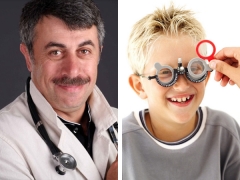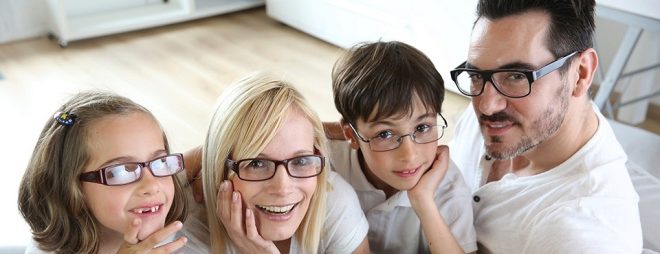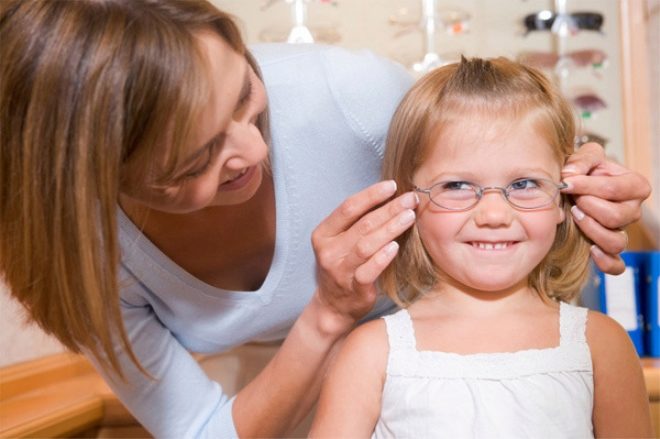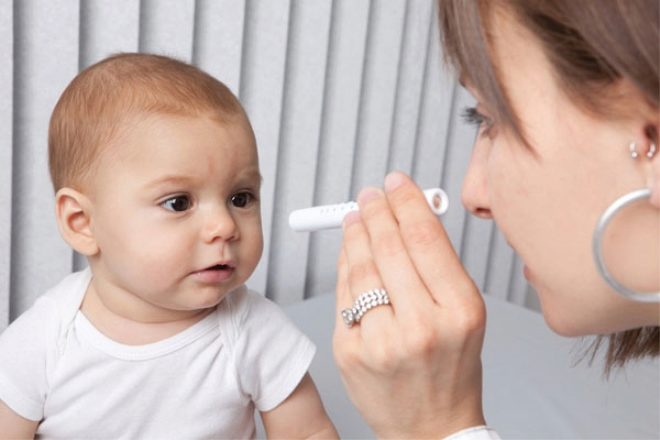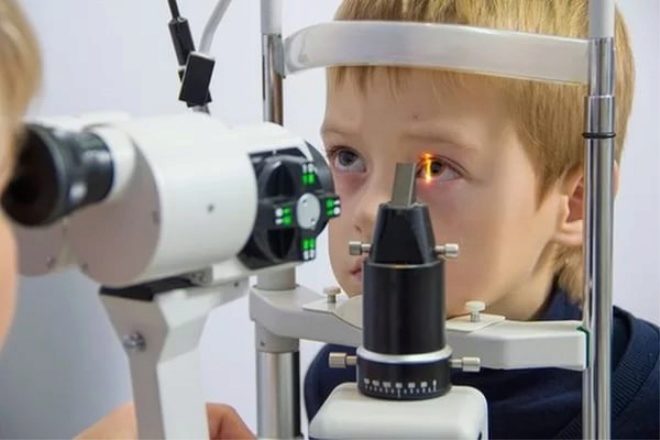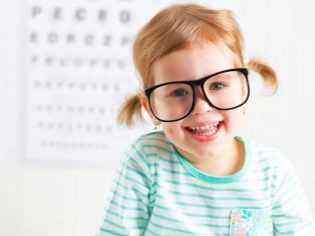Dr. Komarovsky about astigmatism in children
Children look at the world and through sight receive a huge amount of information about its structure and laws. Sight at kids, of course, differs from an adult. Up to a month, newborns generally do not distinguish much. For them, the world is a cluster of blurry spots.
By the age of three months, the child is able to focus his eyesight and hold attention on objects for a rather long time. Starting from 6 months, the organ of vision of the toddler is rapidly improving, “growing up”. But often at a very early age, parents hear the diagnosis of astigmatism from a doctor. About how he appears, how to prevent and treat this eye disease, if you could not avoid it, says famous pediatrician Yevgeny Komarovsky.
What it is
Astigmatism is a violation of the perception of light rays. This happens with defects of the retina, lens or cornea and leads to the inability to perceive images clearly. In a normally seeing person, all the rays converge in one beam at one point of the retina. In astigmatism, the light rays can converge at several points, in front of and behind the retina. This makes it difficult to see the clear outlines of objects.
This disease most often develops at an early age, and if left untreated and seriously treated by parents, the problem can lead to strabismus, farsightedness or myopia, as well as a significant reduction of vision up to blindness.
Usually astigmatism in a child has a hereditary factor. If a mom or dad suffers from eye diseases, the children have very real chances of becoming an astigmatic. Risks grow if both the mother and the father of the baby walk in glasses.
Among other causes of the disease is a violation of eye hygiene (the child watches TV too close to the screen, spends much time at the computer or with tablet in his hands, in his room insufficient lighting or light falling wrong, etc.). In addition, astigmatism can be caused by head or eye injuries or even chronic lack of minerals and vitamins in the children's body.
The disease can manifest itself as short-sighted, farsighted and mixed.
Today, astigmatism is one of the most common ailments: to some extent, 40% of the inhabitants of the Earth have it. More often, the deviation from the norm slightly. Until it reaches a value of 1 diopter, nothing needs to be treated. This is considered the physiological norm for this particular person. Astigmatism in children under one year does not need to be corrected either, since most often it passes on its own, and after a year the child begins to see quite normally.
In children under one year it is rather difficult to suspect astigmatism, but it will not be difficult for attentive parents to notice in the behavior of the child is characteristic symptoms for reducing vision. A kid often cannot take the toy he wants because he misses a pen. In a one-year-old child with normal vision, it is possible to do this procedure unmistakably the first time.
In older children, astigmatism can be suspected due to frequent complaints of headaches, the child’s reluctance to draw, read books, study letters and examine pictures. For him it is difficult, so he does not want. The child cannot concentrate on a subject that is interesting to him, squints to see small objects, and sometimes tilts his head in order to better look at something.
Astigmatism is treated in children, most often by conservative methods - by wearing specially selected glasses, and at school age - contact lenses. Operative methods do not cure ailment in children; all surgical procedures are possible only when the organs of vision cease to “grow,” that is, until the age of 18-20 years, operations are not performed. After this age, it is possible to carry out a correction with a laser, with the help of a notch and cauterization.
Komarovsky about the disease
Evgeny Komarovsky advises to begin to examine the child's vision as soon as possible. Best of all, if the first diagnosis of the crumb will take place in 3 months. Then it should be shown to the ophthalmologist in 1 year. And if in this interval something causes fear and suspicion among parents, then even earlier.
Do I need to treat?
To the question of moms and dads about whether the identified astigmatism should be treated in a child, Evgeny Olegovich answers that everything depends on age. If the child is not a year old, there is nothing to treat. If more, then it is necessary to treat, and the sooner the parents together with the doctors begin to correct the baby’s vision, the better the result will be.
The child will have to wear glasses all the time, Komarovsky emphasizes. Not only while reading or watching TV, but always, and the baby will not get used to it immediately. The task of the parents is to choose a convenient frame for him, to ensure that the child no longer perceive the glasses as something alien and interfering as soon as possible. The older the child, the harder it is for him to get used to wearing glasses. Yevgeny Komarovsky warns that in the period of adaptation a complaint of headache, nausea, lethargy and fatigue in a child is a completely normal phenomenon. On average, the habituation period lasts from 1 to 2 weeks, for some children it lasts a little longer.
Count on the fact that the glasses "cure" is not worth it. They only slow down the development of astigmatism, correct the current stage. But the doctor reminds that quite often, the illness passes by itself as the child grows up. If this does not happen, after 18 years you can always resort to laser technology and other methods of surgical intervention.
Forecast
In general, the doctors' forecasts are quite optimistic: if the child does not have associated eye diseases, astigmatism stops progressing by the age of 7, its stage stabilizes, and in some cases there is a clear improvement in vision.
Tips
Parents can reduce the risk of astigmatism in a child, if from the very birth of the crumbs they follow some simple rules for the formation of a correct and healthy vision. Evgeny Komarovsky recommends:
- Do not hang bright and beautiful rattles in the face of the newborn. Up to 3 months, he is still unable to properly review and evaluate them. After this age, low-hanging toys can cause strabismus and astigmatism. Hanging rattles is at least 40-50 centimeters from the face of the child.
- There are parents who try not to turn on the bright light in the children's room, use night-lights, for good reason, naturally, they create a muffled light for the newborn. This is a common mistake, because such a blurred and fuzzy light interferes with the formation of a normal color perception in the baby, and slows down the processes of becoming a clear vision. Light should be normal, moderately bright.
- The color of toys, according to Komarovsky, is of great importance for the development of vision. In the first six months of life, the baby is better to buy large yellow and green rattles. After six months, the baby’s eyes can be distinguished by other colors, and therefore the brighter and more diverse the colors of toys purchased for a child are, the better.
Parents of kindergarten pupils should remember that a child should not spend much time in front of a computer monitor or at the TV; when drawing or reading, you do not need to tilt your head too much. Parents need to teach their children to sit properly in class.
Moms and dads schoolchildren should pay attention to the lighting in the child’s room when he learns lessons. In case of injuries of the eyes, head, with frequent headaches, which the student can easily report, the child should be shown not only to the pediatrician, but also to the ophthalmologist.
Without exception, all children suffering from astigmatism and prone to it (with insignificant indicators of 0.5 diopters) are recommended to do special eye gymnastics, which strengthens the muscles of the organs of vision and trains the optic nerve.
